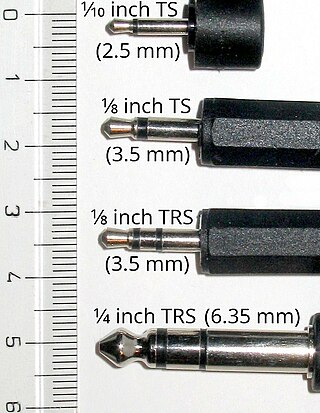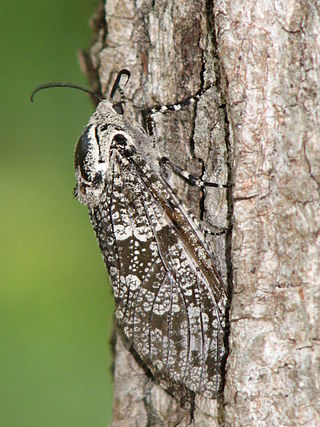
An anti-aircraft vehicle, also known as a self-propelled anti-aircraft gun (SPAAG) or self-propelled air defense system (SPAD), is a mobile vehicle with a dedicated anti-aircraft capability.

The 5.56×45mm NATO is a rimless bottlenecked centerfire intermediate cartridge family developed in the late 1970s in Belgium by FN Herstal. It consists of the SS109, L110, and SS111 cartridges. On 28 October 1980, under STANAG 4172, it was standardized as the second standard service rifle cartridge for NATO forces as well as many non-NATO countries. Though they are not identical, the 5.56×45mm NATO cartridge family was derived from and is dimensionally similar to the .223 Remington cartridge designed by Remington Arms in the early 1960s.

The M4 Sherman, officially medium tank, M4, was the most widely used medium tank by the United States and Western Allies in World War II. The M4 Sherman proved to be reliable, relatively cheap to produce, and available in great numbers. It was also the basis of several other armored fighting vehicles including self-propelled artillery, tank destroyers, and armored recovery vehicles. Tens of thousands were distributed through the Lend-Lease program to the British Commonwealth and Soviet Union. The tank was named by the British after the American Civil War General William Tecumseh Sherman.

A broadsheet is the largest newspaper format and is characterized by long vertical pages, typically of 22.5 inches (57 cm). Other common newspaper formats include the smaller Berliner and tabloid–compact formats.

In photography and cinematography, a wide-angle lens is a lens covering a large angle of view. Conversely, its focal length is substantially smaller than that of a normal lens for a given film plane. This type of lens allows more of the scene to be included in the photograph, which is useful in architectural, interior, and landscape photography where the photographer may not be able to move farther from the scene to photograph it.

The foot is a unit of length in the British imperial and United States customary systems of measurement. The prime symbol, ′, is commonly used to represent the foot. In both customary and imperial units, one foot comprises 12 inches, and one yard comprises three feet. Since an international agreement in 1959, the foot is defined as equal to exactly 0.3048 meters.

A phone connector is a family of cylindrically-shaped electrical connectors primarily for analog audio signals. Invented in the late 19th century for telephone switchboards, the phone connector remains in use for interfacing wired audio equipment, such as headphones, speakers, microphones, mixing consoles, and electronic musical instruments. A male connector, is mated into a female connector, though other terminology is used.

The Florida Keys are a coral cay archipelago off the southern coast of Florida, forming the southernmost part of the continental United States. They begin at the southeastern coast of the Florida peninsula, about 15 miles (24 km) south of Miami and extend in a gentle arc south-southwest and then westward to Key West, the westernmost of the inhabited islands, and on to the uninhabited Dry Tortugas. The islands lie along the Florida Straits, dividing the Atlantic Ocean to the east from the Gulf of Mexico to the northwest, and defining one edge of Florida Bay. The southern part of Key West is 93 miles (150 km) from Cuba. The Keys are located between about 24.3 and 25.5 degrees North latitude.

The Ricoh Company, Ltd. is a Japanese multinational imaging and electronics company. It was founded by the now-defunct commercial division of the Institute of Physical and Chemical Research (Riken) known as the Riken Concern, on 6 February 1936 as Riken Sensitized Paper. Ricoh's headquarters are located in Ota, Tokyo.

The Bofors 40 mm Automatic Gun L/60 is an anti-aircraft autocannon, designed in the 1930s by the Swedish arms manufacturer AB Bofors. The gun was designed as an intermediate anti-aircraft gun, filling the gap between fast firing close-range small calibre anti-aircraft guns and slower firing long-range high calibre anti-aircraft guns. For its time, the Bofors 40 mm L/60 was perfectly suited for this role and outperformed competing designs in the years leading up to World War II in both effectiveness and reliability.

The B-series are a family of inline four-cylinder DOHC automotive engines introduced by Honda in 1988. Sold concurrently with the D-series which were primarily SOHC engines designed for more economical applications, the B-series were a performance option featuring dual overhead cams along with the first application of Honda's VTEC system, high-pressure die cast aluminum block, cast-in quadruple-Siamese iron liners.

The gauge of a firearm is a unit of measurement used to express the inner diameter of the barrel.

Elite Model Management (MM) is a modeling agency that originated in Paris in 1972.

The Pentax K-mount, sometimes referred to as the "PK-mount", is a bayonet lens mount standard for mounting interchangeable photographic lenses to 35 mm single-lens reflex (SLR) cameras. It was created by Pentax in 1975, and has since been used by all Pentax 35 mm and digital SLRs and also the MILC Pentax K-01. A number of other manufacturers have also produced many K-mount lenses and K-mount cameras.

The Cossinae are the nominate subfamily of the Cossidae. The caterpillars of several Cossinae species, such as the carpenterworm and the goat moth, are significant pests. On the other hand, in Chile the caterpillars of the Chilean moth are collected on a commercial scale for sale as fishing bait and terrarium pet food; they are usually called "butterworms" in international trade.

Tropical savanna climate or tropical wet and dry climate is a tropical climate sub-type that corresponds to the Köppen climate classification categories Aw and As. The driest month has less than 60 mm (2.4 in) of precipitation and also less than mm of precipitation.

Iberian gauge is a track gauge of 1,668 mm, most extensively used by the railways of Spain and Portugal. A broad gauge, it is the second-widest gauge in regular use anywhere in the world, with only Indian gauge railways, 5 ft 6 in, being wider.

Sand is a granular material composed of finely divided mineral particles. Sand has various compositions but is defined by its grain size. Sand grains are smaller than gravel and coarser than silt. Sand can also refer to a textural class of soil or soil type; i.e., a soil containing more than 85 percent sand-sized particles by mass.

Rain is water droplets that have condensed from atmospheric water vapor and then fall under gravity. Rain is a major component of the water cycle and is responsible for depositing most of the fresh water on the Earth. It provides water for hydroelectric power plants, crop irrigation, and suitable conditions for many types of ecosystems.
The aspect ratio of an image is the ratio of its width to its height. It is expressed as two numbers separated by a colon, width:height. Common aspect ratios are 1.85:1 and 2.40:1 in cinematography, 4:3 and 16:9 in television, and 3:2 in still photography.


















